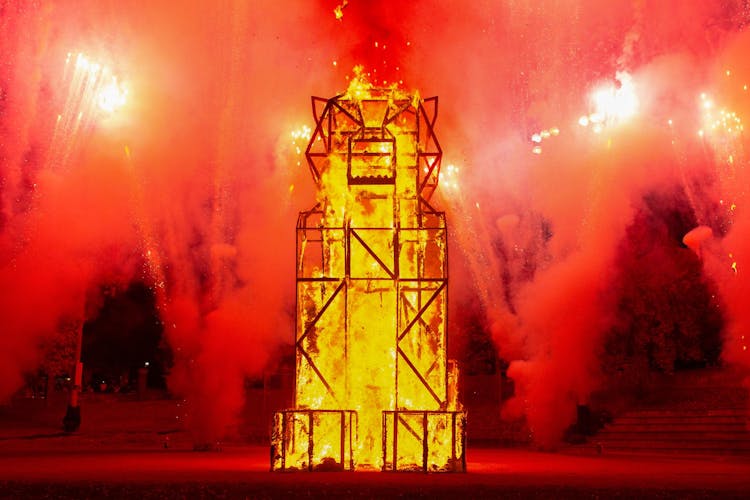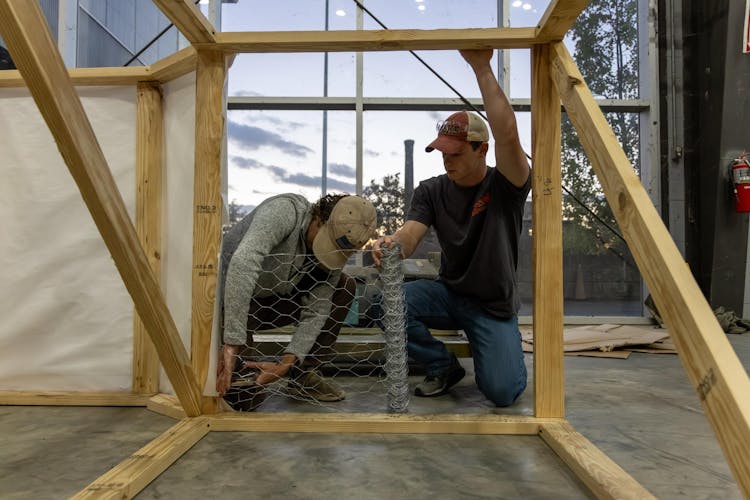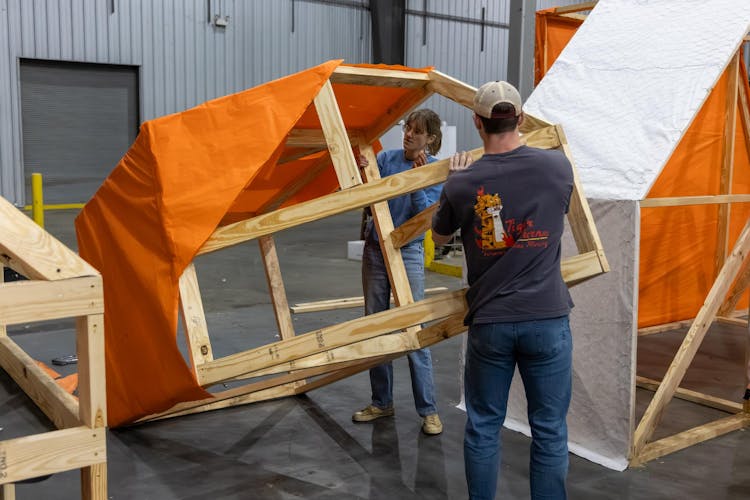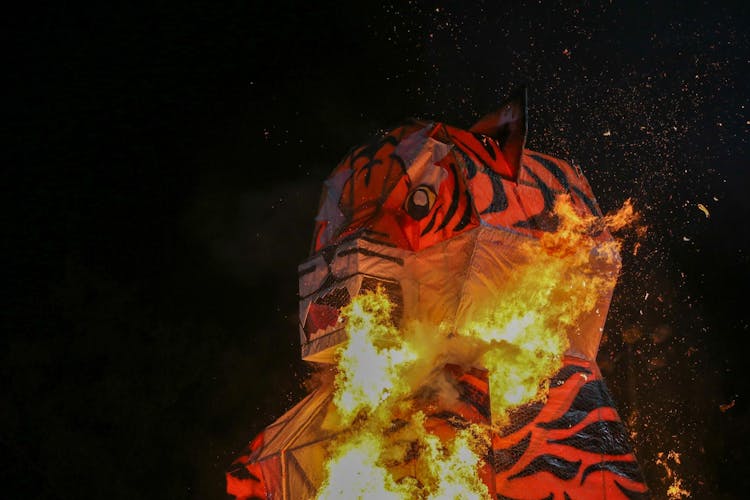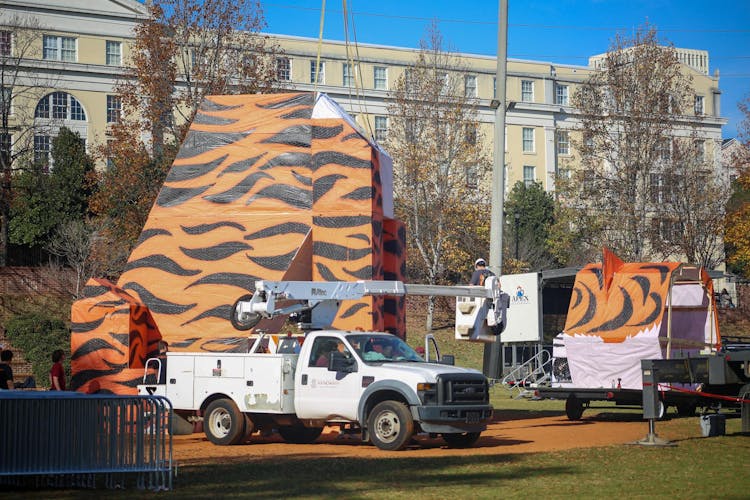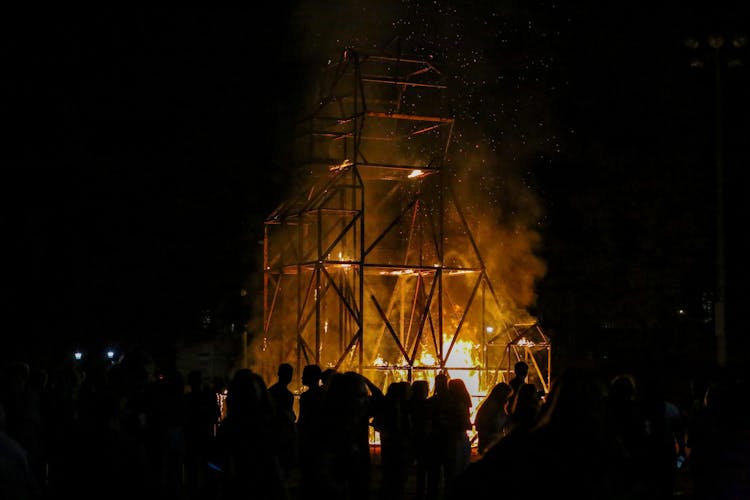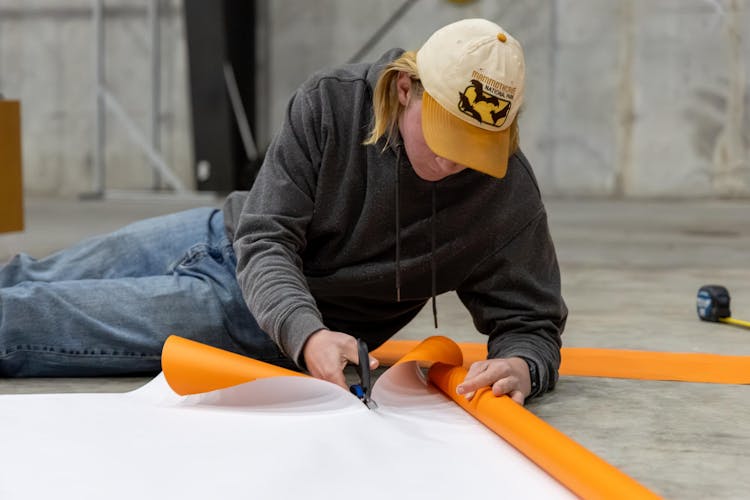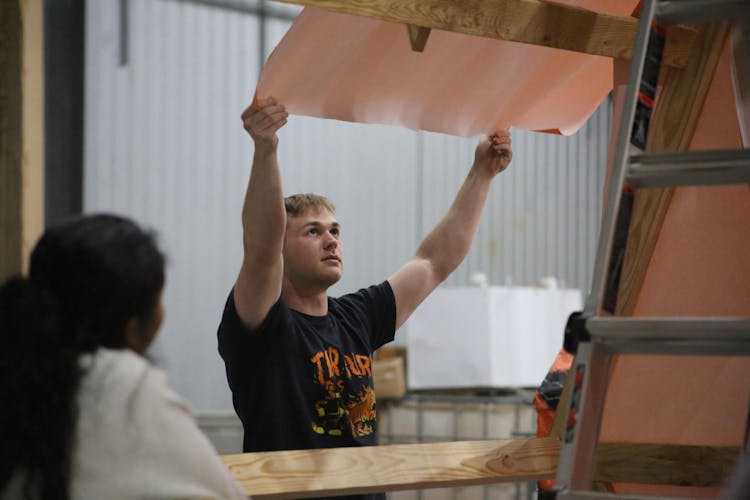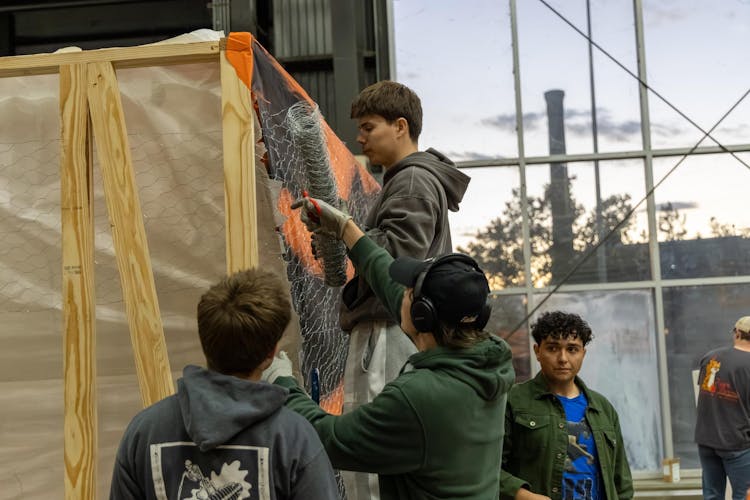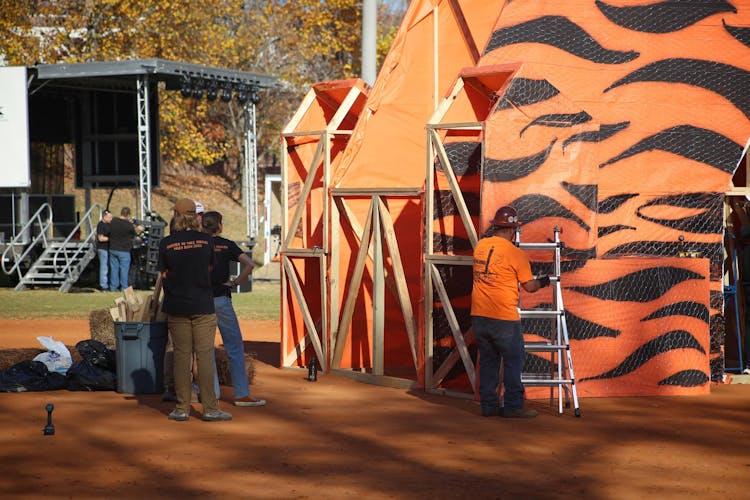Since the establishment of Clemson University in 1889, the University of South Carolina has had a bitter rivalry with its upstate counterpart, both on and off the gridiron. The prelude to the annual football matchup between the rivals culminated on Wednesday in the Tiger Burn, a longstanding USC tradition.
The first Tiger Burn took place in 1902, according to the USC website, although the context was much different. The intention was to diffuse tensions between the two schools by burning a poster depicting a victorious Gamecock standing over a beaten tiger.
Today, instead of a poster, it is a large wooden tiger that stands over 30 feet tall and is set ablaze the week before the annual Clemson-Carolina football game. It is the culmination of six months of planning, designing and building by the USC chapter of the American Society of Mechanical Engineers.
ASME began designing the tiger in May before construction began in mid-October. After receiving the materials, construction began in mid-October.
As construction progressed, members were delegated to different responsibilities outside of woodworking, such as painting the tiger and wrapping it in chicken wire. Finally, the pieces are put together and filled with flammable materials such as straw, pallets and t-shirts.
ASME has been in charge of constructing the tiger for 22 years. Despite this, no two tigers are the same. The ASME students are always looking to keep things fresh, said Jordan Henderson, a third-year civil engineering student and president of ASME.
“We just want to shake it up every year, just to make it a little bit new and different,” Henderson said. “The structure is all about the same, but there are a couple areas in the chest and the face that we knew we could make … a little bit more interesting to look at.”
Henderson said ASME sees the Tiger Burn as an opportunity to form a community with like-minded students and to get hands-on engineering experience.
“I think it's a big community builder," Henderson said. "I think a lot of us get to know each other through Tiger Burn and the days that we spend here. We work together with our classmates and people that we have and haven't met before. I think that a really big part of it is just the student community behind it."

Gabe Duncan, a first-year mechanical engineering student and a new member of ASME, said he has enjoyed his time constructing the tiger. Duncan said he joined ASME to connect with other engineering majors and to be a part of Tiger Burn.
“It has been a fun way to spend my time. It's almost every day of the week. I got to meet new people, make some new friends, and work with my hands,” Duncan said.
The 2025 Tiger Burn was well received. Hudgins and Skeels said the turnout was higher and that the burn itself had much more firepower.
“Last year was very slow. This one was quick, and the fire was much bigger. I think they really went all out,” second-year pharmaceutical sciences student Brandy Hudgins said.
Previously, student competitions were held to determine the design, but now ASME has a team to modify areas it thinks could be improved. This year, the main focus was improving the look of the head, feet and chest.
“They made the tiger a little less cute this year. Last year, I almost felt bad for it to burn because it was adorable. But now, it feels okay," Skeels said.
Tiger Burn doesn’t bring in just USC students. Bailey Odom, a third-year high school student from Rock Hill, South Carolina, made the trip to see Tiger Burn. Odom said he hopes to attend USC for mechanical engineering and would like to be a part of the project in the future.
"I can't imagine all the math that goes into figuring out how you support everything," Odom said. "I think it would just be awesome to see all the things that go into it behind the scenes … and having this big community of people that are all gathered here to see your hard work.”

